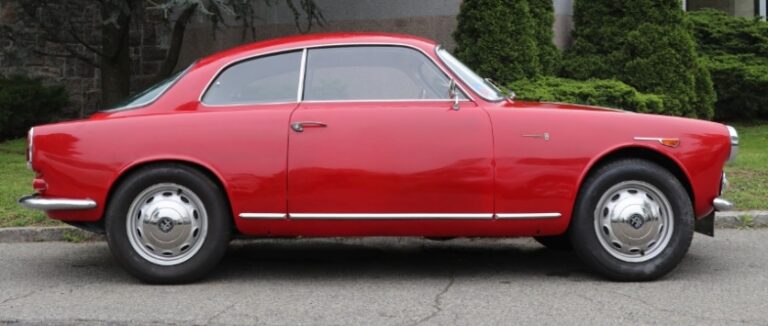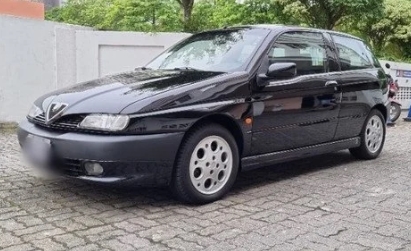The Evolution of the Maserati MC12
The Maserati MC12 stands as one of the most iconic and exclusive supercars of the early 2000s, embodying the Italian manufacturer’s racing heritage and technological prowess. Introduced as a homologation special to allow Maserati to compete in the FIA GT Championship, the MC12’s development and evolution reflect a unique intersection of motorsport engineering and road car craftsmanship. This article traces the evolution of the Maserati MC12, detailing its production timeline, models, and trim variations.
Origins and Development (Early 2000s)
The story of the Maserati MC12 begins in 2002, rooted in Maserati’s desire to re-establish its racing pedigree after the brand’s financial difficulties and subsequent acquisition by Ferrari in 1997. Maserati aimed to develop a homologation special that could compete at the highest levels of GT racing, specifically in the FIA GT Championship.
The project was entrusted to Ferrari’s talented engineers, who adapted the chassis and mechanics from the Ferrari 360 Modena, while Maserati’s design team crafted a bespoke bodywork to maximize aerodynamic efficiency. The result was a car that combined Ferrari’s proven mechanicals with Maserati’s distinctive styling.
Production Timeline (2004–2005)
The Maserati MC12 was officially unveiled in 2004, with production commencing shortly thereafter. Its production run was relatively short, spanning from 2004 to 2005, with a total of 50 units manufactured. This limited production underscores its exclusivity and collector appeal.
- Introduction Year: 2004
- Production End Year: 2005
- Total Units Produced: 50
Technical Specifications
The MC12 was powered by a 6.0-liter V12 engine derived from Ferrari’s Enzo Ferrari supercar. This engine produced around 620 horsepower and 481 lb-ft of torque, enabling the car to accelerate from 0-60 mph in approximately 3.8 seconds and reach a top speed exceeding 205 mph (330 km/h).
The chassis was based on Ferrari’s F360 GT platform, but heavily modified to meet racing homologation requirements and enhance structural rigidity. The aerodynamic design featured a prominent rear wing, front splitter, and aggressive side skirts, optimizing downforce and stability at high speeds.
Key Models and Trim Levels
Unlike mass-produced supercars, the Maserati MC12 was produced in a very limited number, with minimal variations. Yet, within this exclusivity, Maserati offered specific models and trim distinctions primarily based on racing specifications and bespoke customization.
1. Maserati MC12 Versione Corse (2004)
The initial racing version, known as the “Versione Corse,” was developed for the FIA GT Championship. This model was not intended for road use but served as the homologation basis for the road car.
- Features:
- Lightweight construction with extensive use of carbon fiber.
- Race-spec aerodynamic upgrades.
- No interior comfort features; stripped-down for performance.
- Limited to racing teams and privateers.
2. Maserati MC12 Road Car (2004–2005)
The production road car was a homologation version built to meet FIA requirements. It was a highly exclusive supercar available only to select customers.
- Design and Features:
- Bodywork closely resembling the racing Versione Corse but with added comfort.
- Interior features included leather upholstery, sound insulation, and air conditioning—though minimal compared to standard luxury cars.
- Unique number plates and badges indicating its limited status.
- Customization options were available, allowing clients to personalize exterior colors and interior trims.
Trim Levels and Variants:
While the MC12 was generally offered as a single trim level, some bespoke versions emerged through Maserati’s personalization program, which included options like different exterior paint schemes, interior materials, and special detailing. These bespoke modifications were typically commissioned by individual clients rather than mass-produced.
3. Special Edition and One-Off Models
In addition to the standard MC12, Maserati occasionally built special or one-off models for individual customers. These included unique color schemes, interior finishes, and aerodynamic modifications suited to specific preferences.
- Example: The MC12 Versione Corsa (not to be confused with the racing Versione Corse) was a limited road-legal version with minor aerodynamic tweaks and aesthetic enhancements, but these were extremely rare.
Notable Features and Changes Over the Years
Throughout its brief production span, the Maserati MC12 saw minimal mechanical evolution, primarily because it was a homologation model, and its design was tightly constrained by racing regulations. However, some notable features and refinements include:
- Aerodynamic Refinements: Early models had more aggressive front splitters and rear wings, while later cars benefitted from subtle aerodynamic tweaks to improve stability.
- Weight Reduction: Emphasis on lightweight materials, especially carbon fiber, was consistent across all units.
- Interior Customization: Maserati offered bespoke interior options, including unique leather combinations, stitching, and trim materials, making each MC12 highly personalized.
.
You’ve got that cool car, but is it resting in its own cool place?
It’s visually pleasing for the surrounding areas outside of your home to look as awesome as what’s stored inside your garage! If you desire a truly inspirational environment, you should check into these plans!

.
End of Production and Legacy
After producing just 50 units, Maserati ceased MC12 production in 2005. The car’s exclusivity, combined with its racing pedigree and impressive performance, has cemented its status as a collector’s icon.
The MC12’s impact on Maserati’s brand image was significant, helping to reposition the marque as a serious contender in high-performance sports cars. Its racing success, notably in the FIA GT Championship where it dominated for several seasons, underscored its engineering excellence.
The MC12 in the Collector Market
Today, the Maserati MC12 commands astronomical prices at auctions and private sales, often exceeding several million dollars. Its rarity, racing history, and bespoke nature make it one of the most sought-after supercars of the 21st century.
Conclusion
The Maserati MC12’s evolution is characterized by a brief but impactful production run that bridged racing excellence and road car innovation. From its origins as a homologation racing prototype to its status as a highly exclusive supercar, the MC12 exemplifies Italian craftsmanship, racing heritage, and technological ambition. While its production was limited to just 50 units, its influence persists in Maserati’s current lineup and the hearts of automotive enthusiasts worldwide.







